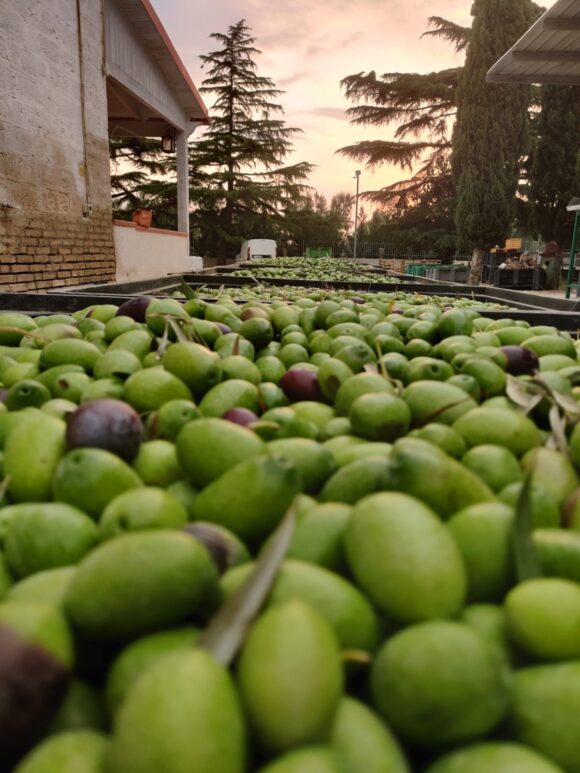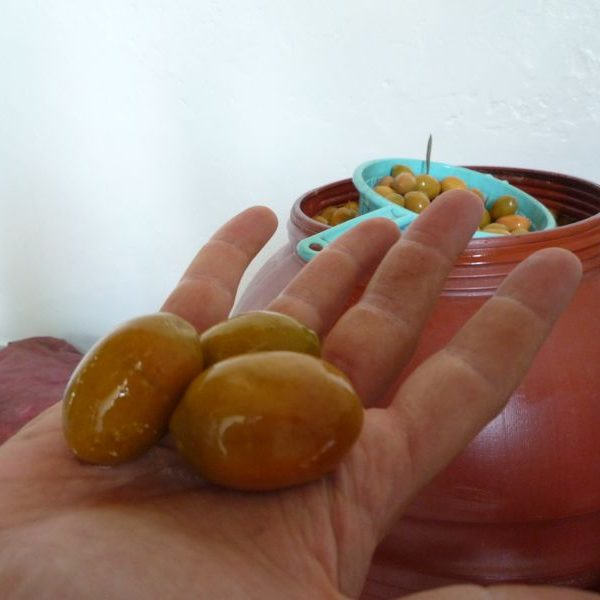If you are “in the know” of all things Italian – true Italian – you would not order cappuccino after 11 in the morning. You would also not ask for a pitted Bella di Cerignola olive. They do not exist. The real Bella di Cerignola has a firm, meaty flesh and pointed pit, which cannot be removed. Look how large these olives are, in my hand. They come green and black, my favorite.
The black olives are not born black, from the tree. They have to be treated; and here is where the artisanal process really differs from the industrial one. With the industrial process, the olives are harvested before they reach full maturity, when their flesh is still quite hard. Then they are subjected to strong, continuous jets of water where the air induces the oxidation of the olives and they become black. Industrial olives reach the “desired blackness” only with the addition of a chemical, gluconnato ferroso, identified as “iron” on the label. Large companies add up to 150mg/kg of this chemical. Any more than that is against the law.
On the other hand, artisan Fratepietro harvests their olives when they are fully ripe with varying degrees of color, ranging from green to dusty rose. This means less treatment is necessary to obtain the right color and consistency, and the resulting olive is much truer to its origin.
Fratepietro’s olives undergo the oxidation process for approximately 10 days, with the addition of only 40-60mg/kg of iron. Unlike the industrial ones, these olives can have varying degrees of blackness. This is due to the differences in color at the time of harvest, and to the ambient temperature when they are treated. In colder temperatures, the olives absorb smaller amounts of iron and thus appear less black. So you may see some color variation in your jar of olives, and this is totally normal!

